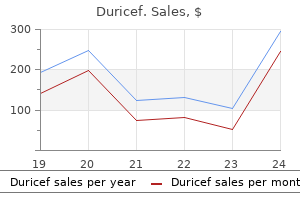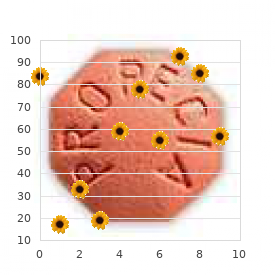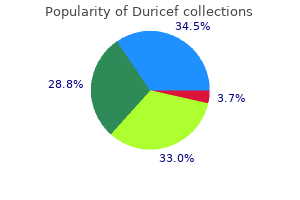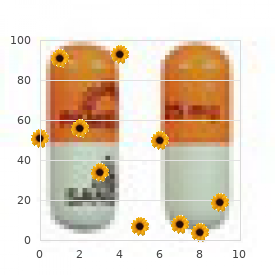Only $0.54 per item
Duricef dosages: 500 mg, 250 mg
Duricef packs: 30 pills, 60 pills, 90 pills, 120 pills, 180 pills, 270 pills, 360 pills
In stock: 618
10 of 10
Votes: 242 votes
Total customer reviews: 242
Description
While patients often point to a substernal area where they feel food "hanging-up medications identification cheap duricef 500mg visa," there can be poor correlation between this localization and a potentially causative structural lesion, particularly for proximal locations [9]. Physical examination is typically unrevealing in patients with esophageal dysphagia, except for the finding of tylosis palmaris (hyperkeratosis of the palmar surface of the hands rarely seen with esophageal cancer), but if a motor disorder is suggested on history, a thorough exam for signs of scleroderma. The presence of a succussion splash remote from eating on physical exam raises the issue of gastric outlet obstruction or gastroparesis. Abdominal Pain Abdominal pain is the most frequent presenting symptom the gastroenterologist encounters [11], and it should always be evaluated systematically. A complete history includes eliciting information about the acuity of onset, triggering events, location, radiation, quality, progression, and exacerbating and relieving factors. The quality of the pain is most useful for characterizing colic, a paroxysmal cramping sensation typical of an intermittently obstructed hollow viscus. Biliary colic is typically localized to the right-upper quadrant or the epigastrium. Pancreatic pain is frequently severe and bores into the mid-back from the epigastric region and may be eased by sitting and leaning forward. When functional abdominal pain is a possibility, examination with distraction the application of abdominal pressure with the stethoscope while "listening" or conducting a conversation with the patient is invaluable. Pain related to mesenteric vascular insufficiency generally is postprandial and periumbilical, is said to present with abdominal pain out of proportion to the findings on exam, and can be difficult to diagnose in the early stages. A high level of suspicion for this condition is required, particularly in patients with vascular disease. Malabsorptive diarrhea, either from pancreatic insufficiency, bacterial overgrowth, or celiac disease, can be characterized by steatorrhea. Because many patients do not see frank fat, oil, or grease mixed with their stools, or because they do not actually look at each stool in detail, this sign is often difficult to elicit on history [13]. Instead, asking about "peanut butter" consistency and the color of the stool may provide a more "real-world" prompt for the patient. Diarrhea may be related to a wide variety of medications, making a good medication history imperative. Nausea/Vomiting the patient complaining of nausea and/or vomiting presents a challenge to the gastroenterologist because these symptoms are nonspecific, the potential causes are legion, and evaluation may range from minimal to extensive. As with heartburn, the history for nausea and vomiting should initially focus on asking the patient to explicitly describe what they are experiencing [10]. Nausea is defined as a sensation of impending emesis, while the act of emesis is the expulsion of gastric contents.

Theobroma (Cocoa). Duricef.
- Are there any interactions with medications?
- Dosing considerations for Cocoa.
- Are there safety concerns?
- What other names is Cocoa known by?
- High blood pressure.
- What is Cocoa?
- High cholesterol; heart disease; intestinal diseases; diarrhea; asthma; bronchitis; lung congestion; liver, bladder and kidney ailments; diabetes; and preventing heart disease, wrinkles, and stretch marks during pregnancy.
- How does Cocoa work?
Source: http://www.rxlist.com/script/main/art.asp?articlekey=96789
Forced-air warming is especially attractive symptoms gonorrhea buy discount duricef 250mg on line, as it is easy to use, inexpensive, and for most patients and surgery has a pretty good cost/benefit ratio. Another alternate approach is conductive warming using resistive heating or circulating water. Active patient warming is therefore impossible unless very large amounts of fluids are given over a short period of time. For example, 1 l of crystalloid given at room temperature decreases core temperature by 0. As a clinical consequence, only a marginal amount of heat is lost via the respiratory system and warmed air is unable to transfer considerable amount of heat into the patients. These catheters transfer much more heat compared to skin warming devices, but their use is mostly restricted to patients requiring a rapid onset of hypothermia. Is less common in obese patients and therefore perioperative warming is not indicated in short procedures not exceeding 45 min Perioperative hypothermia: A. Is relatively uncommon, but if present needs consequent treatment by the anesthesiologist C. Mild hypothermia (drop of about 1 ° C of core temperature) in patients undergoing regional anesthesia is common, but is clinically relatively not relevant and does not need attention the interthreshold range is: A. Is based on balancing between cold core temperature and warm peripheral thermal compartment C. Temperature measured by using a Swan catheter estimates the core temperature by a couple of tenths of 1°. Measurement of the bladder temperature is effective and gives a reliable estimation of the actual body temperature. Warming the fluids only is effective to prevent from phase 1 re-distribution hypothermia, but not from phase 2. Perioperative hypothermia is common in all surgical patients undergoing general and neuroaxial anesthesia. Perioperative hypothermia causes complications including increased risk of blood loss/transfusion requirement, wound infections, prolonged activity of medication, and thermal discomfort. The interthreshold range is affected by all inhalative agents, but not be sedatives such as diazepam. Generally, all anesthetics including isoflurane, sevoflurane, inhaled anesthetic nitrous oxide, propofol, and opioids significantly influence the thermoregulatory regulation, by shifting the vasoconstriction and shivering thresholds downward. The extent of the shift is linear concentration-dependent for intravenous drugs, while it is disproportionate at higher concentrations for volatile anesthetics. On the other hand, sedatives such as midazolam do not influence the thermoregulatory responses, even if combined with clinical doses of opiods. The threshold for initiating vasoconstriction is only marginally below the sweating threshold (indicating that the interthreshold range is usually only 0. Shivering can increase the metabolic rate by a factor of 3 to 4 for about 34 h, but is finally limited by when muscles tire.

Specifications/Details
It occurs less frequently among preterm infants (Carr et al medications given to newborns 500mg duricef purchase with amex, 1966; Taylor and Bondurant, 1957). In a majority of infants, the lesions develop between 1 and 3 days of age, but they may appear as late as 3 weeks. No predilection of the disorder for race, gender, season, or geographic location has been reported. The basic skin lesions are small (1 to 3 mm in diameter) erythematous macules that evolve into tiny white pustules, with a prominent halo of erythema, and can look similar to a flea bite. Individual lesions may persist for only a few hours, but the eruption lasts for several days or, rarely, for several weeks. The trunk is the most frequent site of predilection, but the face and extremities also may be involved. The etiology is unclear, but in some cases there may be an association with a preceding scabies infestation. Eosinophilic pustular folliculitis in infants typically occurs on the scalp and extremities, recurring in crops similar to acropustulosis of infancy. Infections such as bacterial folliculitis, bullous impetigo, candidiasis, herpes, and scabies are also included in the differential and need to be ruled out. The early stage of incontinentia pigmenti can also be mistaken for erythema toxicum. The diagnostic workup outlined in Chapter 97 can differentiate among these conditions. The eosinophilic infiltrate suggests that erythema toxicum is a hypersensitivity response, but studies attempting to incriminate chemical or microbiologic substances, acquired either transplacentally or vaginally from the mother. At a molecular level, there appears to be an accumulation and activation of immune cells in these lesions as seen by immunohistochemical staining of punch biopsy specimens from cutaneous lesions. Histologic features consist of eosinophil-filled intraepidermal vesicles and a mixed intradermal inflammatory infiltrate that tends to localize around the superficial portion of the pilosebaceous follicle. Considerations in the differential diagnosis include other benign, self-limited disorders such as transient neonatal pustular melanosis, miliaria, infantile acropustulosis, and eosinophilic pustular folliculitis. Acropustulosis of *This chapter includes material from the previous edition, to which Nancy B. Hyperpigmented macules on the lower back and buttocks, some of which are encircled by scales. A prospective study reported that 17 infants with typical congenital lesions subsequently developed lesions of erythema toxicum, linking the two conditions (Ferrandiz et al, 1992). Once the diagnosis is confirmed, anticipatory guidance and reassurance should be provided to parents. The pustules last approximately 48 hours, but the macules can persist for several months. They are single or sparsely scattered pearly (1 to 2 mm) lesions that occur on the face. Large milia (greater than 2 mm in diameter) are found in infants with type I oral-facial-digital syndrome (Solomon et al, 1970).
Syndromes
- Infection (a slight risk any time the skin is broken)
- Low blood pressure
- Office for Victims of Crime - www.ojp.usdoj.gov/ovc
- Cyanosis (blue skin, lips, or fingernails)
- Dry mouth
- Fecal incontinence
- Fatigue
- What other symptoms are you having?

Coordination of this schedule among neonatology treatment kidney disease discount duricef 500 mg fast delivery, ophthalmology, and nursing is essential. If outpatient appointments are not kept or proper information is not conveyed when the baby is transferred to another facility, potentially treatable disease may be missed, with disastrous consequences (Mills, 2009). During the study, approximately 15% of all babies born in the United States with birthweights of less than 1251 g were enrolled. Results documented a beneficial effect on both visual function and structure in eyes assigned to receive cryotherapy (Cryotherapy for Retinopathy of Prematurity Cooperative Group, 1988a, 1988b), a benefit that persisted through the last study examination at age 15 years (Cryotherapy for Retinopathy of Prematurity Cooperative Group, 1990b, 1990c, 1993, 1996, 2001; Palmer et al, 2005). For eyes with total detachment, it appears that although surgery may give good anatomic results, good functional outcome is not likely to be achieved (Hirose et al, 1993; Quinn et al, 1991, 1996). However, clinical trials must be undertaken before this modality is used in babies in whom vasculogenesis is incomplete not only in the eye but in other organs. Long-term systemic effects must be monitored in these children (Darlow et al, 2009). Role of the Neonatologist and Pediatrician Neonatal health care providers clearly play a central role in the ophthalmologic care of the newborn and young infant. The first few weeks of life constitute a critical period of visual development in the brain, and the opportunity and responsibility to screen for ocular disease rests in the hands of the neonatologist and primary medical provider, whether pediatrician, family physician, or nurse practitioner. Some conditions require particularly urgent referral, such as an abnormal red reflex, cloudy cornea, and ocular infection or trauma. In the case of neonatal conjunctivitis, diagnostic cultures and treatment should be undertaken without delay, but ophthalmology consultation is still necessary to rule out intraocular involvement. The neonatal health and primary care pediatric health teams should provide ongoing eye-related education and support. Reducing the risk of pediatric abusive head trauma is one important topic to be discussed with all parents and caregivers. Pediatricians can also provide support for the families of children with visual impairment, ensuring early, anticipatory referral to state commissions for the blind and early intervention services, and ongoing encouragement for parents to maximally utilize such resources when available. Children at high risk for eye disease should be referred for examination by a pediatric ophthalmologist, including children with a history of prematurity or metabolic or genetic diseases; significant developmental delay or neurologic problems; systemic diseases associated with eye abnormalities; a family history positive for retinoblastoma, childhood cataracts or glaucoma, inherited retinal disorders, or blindness in childhood; and those whose parents needed glasses at a very young age. Additional Resources In addition to texts, clinical guidebooks, and online medical literature search engines (such as The following policy statements are available at this website: Red Reflex Examination in Neonates, Infants, and Children. This distinct functional feature determines whether optimal trophoblast invasion takes place and can result in normal or adverse pregnancy outcomes. A measurement larger than normal standards for gestational age indicates that the fetus is at high risk for Down syndrome, congenital heart disease, or both. A 20-week fetus with limbs that are angulated and deformed from multiple fractures.
Related Products
Additional information:
Usage: q.i.d.

Tags: 500mg duricef visa, generic duricef 500mg amex, cheap duricef 500 mg on-line, cheap 250 mg duricef otc
Customer Reviews
Real Experiences: Customer Reviews on Duricef
Sven, 60 years: If endoscopic biopsies are negative but there remains a high level of clinical suspicion, then full-thickness laparoscopic biopsies can be considered. The half-life of endogenous vasopressin is 1035 min, and it is metabolized via renal and hepatic pathways. It is most commonly attributed to the consumption of undercooked or raw pork products.
Rhobar, 52 years: Some authors believe that swallowing rehabilitation can improve oropharyngeal dysphagia even when it is caused by an anatomic abnormality. Causes of deprivational amblyopia include congenital or acquired cataracts, corneal opacities, ptosis, and vitreous hemorrhages. Spontaneous resolution is not expected except in one specific malformation, the salmon patch.
Eusebio, 23 years: They can be successfully treated endoscopically with injection, thermal probes, clips, or band ligation. Prognosis Regardless of the therapeutic approach, a chalasia is not considered a "curable" illness. Such tumors almost never metastasize, and when indicated, they should be simply resected.
Tippler, 64 years: Vapor-liquid equilibria for the binary systems diethyl ether-halothane (1, 1, 1-trifluoro-2-bromo2-chloroethane), halothane-methanol, and diethyl ether-methanol. That evening she was awakened by significant lower abdominal crampy pain and multiple loose, non-bloody, liquid bowel movements. Repeated courses may be required, as recurrence has been reported either during the taper (15%) or following it (3350%).
Gancka, 63 years: Therapy: r Mild disease may be monitored or symptomatically managed with dietary exclusions, as some cases resolve spontaneously. Endotracheal intubation should be strongly considered in patients with ongoing hematemesis or altered mental status, to prevent aspiration and to prepare for emergency endoscopy. Both keratinocytic and sebaceous components may occur in the same patient, the former more commonly involving the trunk and extremities and the latter more often involving the head and neck.
Mannig, 55 years: The most common complication related to a central catheter during a closed claim study is a wire or catheter embolus followed by cardiac tamponade, carotid artery puncture/cannulation, hemothorax, and pneumothorax. It results from incomplete septation between the inferior portion of the left atrium and the coronary sinus, and is commonly associated with a persistent left superior vena cava. A variety of factors, including sebaceous gland activity, humidity, heredity, and corticosteroid treatment, may be influential in allowing it to become an opportunistic pathogen.
Ortega, 37 years: These foot-like processes support the glomerular capillary by wrapping around them and weave together with the foot processes of adjacent podocytes. Self-reported halitosis and gastroesophageal reflux disease in the general population. Other studies have not shown any significant benefit in important clinical outcomes such as mortality, rebleeding, and surgery [13], or in cost-effectiveness in North America [14].
Ben, 38 years: Findings include a white corneal stromal infiltrate with an overlying corneal epithelial defect that stains with fluorescein. Similarly, the ratio of the amplitudes of the second to the first post-flush waves (amplitude ratio) can be used to derive the damping coefficient from standard nomograms. Patients who develop diabetic nephropathy demonstrate pathologic changes in mesangial cells as well, as demonstrated by expansion of the mesangial matrix, mesangial cell hypertrophy and proliferation, and the development of inflammation.



